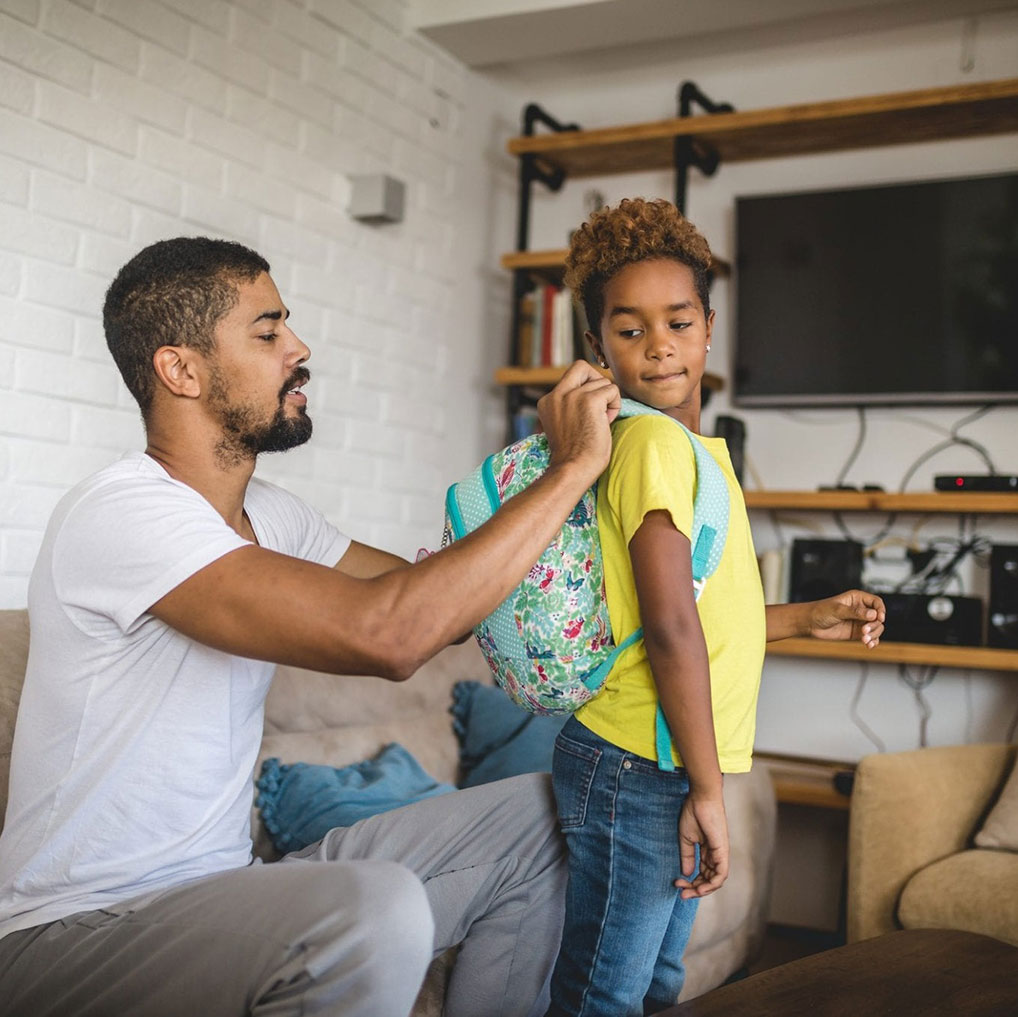My Child Got Lice at School, What Should I Do?

September 25, 2023
Of all the reasons the school nurse calls, lice may be your least favorite. These tiny insects may spread from child to child, causing itching and disruption.
Children and adults may get lice, which live on people’s scalps and spread easily. Lice don’t jump or fly, so they spread during head-to-head contact.
How Lice Spread From Person to Person
Lice are insects, as small as sesame seeds, that live their lives on scalps. They feed on blood from the scalp and lay eggs, known as nits.
The only way lice move between people is through close contact. They may travel on clothing, but more often, they crawl to someone else’s head.
When children play or have close contact with classmates, they may spread lice. If the school nurse discovers one case, they should check everyone in class.
There’s a stigma attached to lice, but even very clean people may be affected. If your child gets lice, it isn’t a poor reflection on you.
“Anyone can get lice, even if they practice good hygiene,” pediatrician Edwin Wymer, D.O. says. “Don’t feel that you’ve failed somehow if your child is sent home with lice.”
Fortunately, over-the-counter lice treatments are inexpensive and effective, although time-consuming.
How to Treat Your Child’s Lice
Over-the-counter treatments are the first-line treatment for most cases of lice. A couple different treatment options include:
- Applying a rinse containing permethrin to damp, shampooed hair
- Applying a product containing pyrethrin to dry hair
- Applying a lotion containing ivermectin to dry hair
Each product should be rinsed off after 10 minutes, then reapplied a week later. All of these products help kill lice; they don’t target nits.
After applying a lice treatment, use a nit comb on your child’s hair. This very-fine-toothed comb helps remove sticky nits from the hair.
Next, take steps to minimize the spread of lice within your home. Treat items that may have come in contact with your child’s head:
- Wash clothing, hats, towels, bedsheets and blankets in hot water (130 degrees). Place them in the dryer for 20-plus minutes to kill any remaining lice.
- Send items that can’t be laundered – like big comforters – to be dry-cleaned.
- Place other items, like stuffed animals and pillows, in a plastic garbage bag. Seal the bag shut for three or more days; any remaining lice will die.
- Vacuum rugs, carpets and upholstered furniture. There may be stray hairs with nits on them on these surfaces.
Check the hair of every member of your household every two or three days. Treat anyone with lice with medicated shampoo, followed by nit combs.
You should also alert the parents of children who recently played with your child. Telling everyone who may have interacted with your child may help stop the spread.
How to Reduce the Chances of Spreading Lice
You may lower your child’s chances of getting lice by limiting their interactions. Because lice spread during head-to-head contact, they’re more likely to spread:
- When children whisper closely to each other
- When friends or relatives hug or play closely
- During sleepovers, especially if kids share pillows or stuffed animals
- During contact sports
Your child may be less likely to catch or spread lice by sharing personal items less. Tell your children not to share these items with their friends or relatives:
- Brushes or combs
- Hair ties, ribbons or other accessories
- Hats or scarves
- Bike helmets or other safety helmets
- Headphones
- Pillows, stuffed animals or security blankets
When Your Child Can Return to School
Ask the school nurse when your child can go back to school. Some school districts have stricter policies than others.
The American Academy of Pediatrics recommends that children return after treatment, even with nits. But your school district may have a no-nits policy.
“The AAP encourages schools to allow students to return as soon as possible,” Dr. Wymer says. “This promotes learning, discourages absenteeism and isn’t unsafe for other students. If all precautions are taken, returning to school can be done safely.”
Next Steps & Resources:
- To make an appointment with Dr. Wymer, or a doctor near you, call 800-822-8905 or visit our website.
The material provided through HealthU is intended to be used as general information only and should not replace the advice of your physician. Always consult your physician for individual care.







